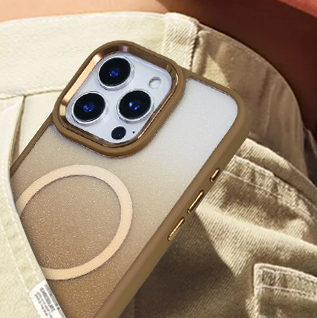Unlock the Secrets: Discover the Best Materials for iPhone Cases and What They Mean for You!
Choosing the right material for your iPhone case is essential for a variety of reasons, including protection, aesthetics, and functionality. With so many options available, each material offers its unique benefits and drawbacks, which can significantly affect your user experience. Whether you’re looking for something sleek and stylish or robust and protective, understanding the materials used in iPhone cases can guide you in making an informed decision. From silicone to leather, the material you choose will not only impact your device's durability but also reflect your personal style. Let’s dive into the world of iPhone case materials to uncover which one is the best fit for you.

Understanding iPhone Case Materials
iPhone cases come in a variety of materials, each designed with specific purposes in mind. The choice of material plays a crucial role in how well the case protects your phone, its aesthetic appeal, and even its functionality. Factors such as weight, grip, and feel can greatly influence your daily interactions with your device. For instance, a lightweight plastic case may suit those who prioritize portability, while a more robust leather case might appeal to individuals seeking a premium appearance. Knowing the different materials and their characteristics can help you strike a balance between style and protection. Let's explore some of the most popular materials used in iPhone cases to see how they stack up against one another.
Popular Materials for iPhone Cases
Silicone
Silicone cases are known for their flexibility and excellent shock-absorbing capabilities. These cases provide a great grip, making them less likely to slip out of your hands, which is especially helpful for those prone to dropping their phones. My friend Sarah swears by her silicone case; she’s had multiple spills and drops, yet her phone remains unscathed. However, while silicone cases are easy to clean, they can attract dust and lint over time, which can be a drawback for some users. Additionally, they may not provide the same level of protection against serious impacts as harder materials.
Plastic
Plastic cases are a popular choice due to their lightweight nature and durability. They offer a good level of protection while keeping the overall bulk of the phone minimal. However, some users find that plastic can feel less premium and may not absorb shocks as effectively as softer materials like silicone. My friend James had a plastic case that cracked after a significant drop, which made him rethink his choice. While plastic cases come in various designs and colors, balancing protection and aesthetics can be a trade-off users must consider.
Leather
Leather cases exude a sense of class and sophistication. They provide a premium feel and often age beautifully, developing a unique patina over time. However, they may not offer the same level of drop protection as silicone or plastic options. My colleague Lisa loves her leather case for its elegant look but is careful to avoid exposing it to moisture, as it can wear down quickly. Maintenance is vital with leather cases, as they require regular conditioning to keep them looking their best. While they can be a stylish choice, users should weigh the pros and cons regarding durability and upkeep.
Metal
Metal cases provide a robust level of protection and a sleek, modern aesthetic. These cases are incredibly durable and can withstand significant impacts, making them ideal for users who lead active lifestyles. However, a downside to metal cases is that they can add weight to the phone and may interfere with signal reception. My friend Tom tried a metal case but ultimately switched back to a lighter option after noticing signal issues in certain areas. While metal cases can be an eye-catching option, users need to consider their overall practicality.
Hybrid Materials
Hybrid cases combine two or more materials to enhance protection and style. Typically, they feature a hard outer shell for durability and a soft inner layer for shock absorption. This combination allows for a balance of aesthetics and functionality, appealing to a wide range of users. My sister uses a hybrid case and loves how it feels sturdy yet lightweight. However, the complexity of materials can also lead to higher costs and varying levels of protection depending on the design. Users should evaluate the specific features of hybrid cases to determine if they meet their needs.
Choosing the Right iPhone Case Material
In summary, understanding the different materials for iPhone cases can significantly influence your choice based on protection, style, and personal preferences. From the shock-absorbing qualities of silicone to the premium feel of leather and the durability of metal, each material has its unique benefits and drawbacks. Ultimately, the best material for your iPhone case will depend on your lifestyle, how you use your device, and what you value most—protection, aesthetics, or a balance of both. By considering your options thoughtfully, you can select a case that not only safeguards your phone but also complements your personal style.






commentaires